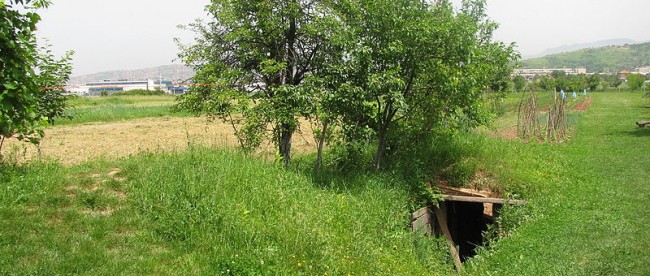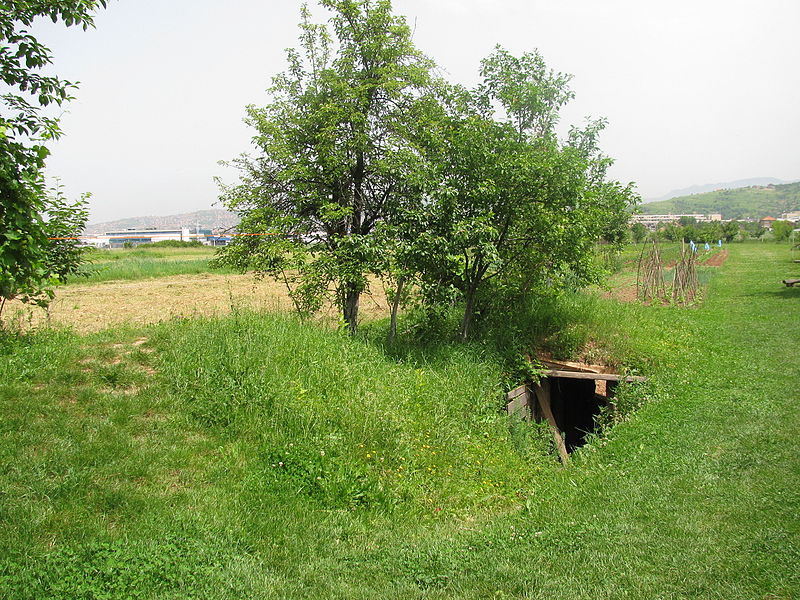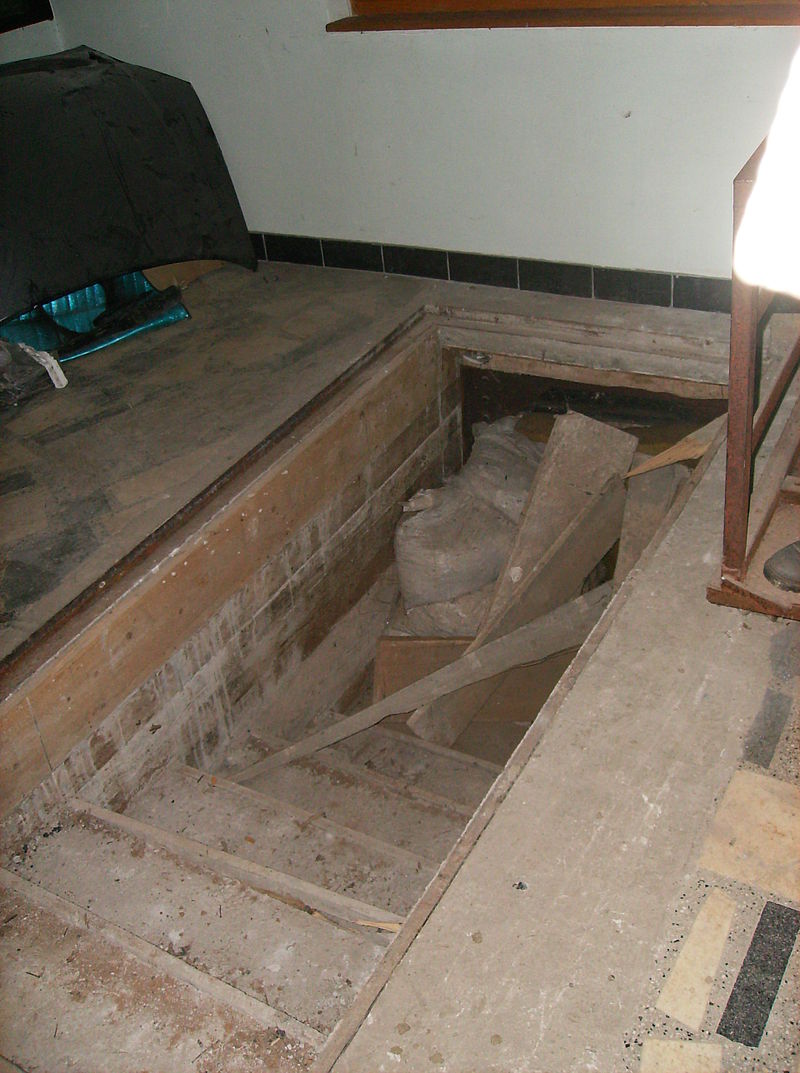The Tunnel of Hope

The tunnel ran about a half of a mile (800m) long. With a ceiling height of just under five feet (1.5m), most people needed to crouch in order to go through it. It was very narrow — it’d be cramped if two people tried to pass in opposite directions. The walls were held up, as if by magic, by wooden planks too weak to last as long as they did. The tunnel, hand-dug with shovels and picks, lacked ventilation, requiring passage-goers to wear gas masks. One entered through here:

and exited into a basement, as seen below.
Coming out that side put you right into a war zone. Which was, basically, the point.
The Bosnian War began in 1992 and lasted well into 1995. During much of that time, Serbian forces had seized control of Sarajevo, the capital of Bosnia and Herzegovina. Areas controlled by the Serbs were cut off from the rest of the country; the Serbian forces didn’t typically allow people to leave or enter. For those Bosnians still in Sarajevo when the Serbs took over, the siege of the city meant that their home had become a prison. Food and supplies were controlled by the occupying forces and were therefore waning as few deliveries came into the area. As the occupation continued onward, things got progressively worse — with no end in sight.
The solution came underground.
During most of the siege, the Sarajevo neighborhood of Butmir was within the area controlled by Serbian forces but close to the unoccupied (and therefore Bosnian-controlled) neighborhood of Dobrinja. Both areas were near the airport, which was useful: it meant that supplies could come into Butmir from relatively far distances and relatively safely. It also meant that when a group from Butmir and another group from Dobrinja began digging tunnels toward one another (with the plan of meeting in the middle), no one would notice, as the two tunnels would connect somewhere under the airport’s runways — and not, say, under someone’s home.
According to the BBC, the plan went into action in January of 1993. A man named Edis Kolar agreed to have the Butmir side of the tunnel start in his basement, at great personal risk to himself and his family and at even greater inconvenience. For the next six months, ad hoc construction crews — at a pay rate of a pack of cigarettes per person per eight-hour shift — worked around the clock extracting dirt, rocks, and whatever else was in the way. Workers on the other end of the would-be tunnel did the same. By June of that year, the two tunnels connected up, and Bosnians once again had access to those otherwise trapped inside Sarajevo.
Despite the tunnel’s rudimentary structure, it helped change the fates of countless Bosnians. Mental Floss recounts the details:
The Sarajevo Tunnel was the Trojan Horse of the Bosnian War. Historians estimate that more than 1 million trips were taken through the shaft, allowing the import of about 20 million tons of food. Machine guns and crates of ammunition also flowed through the Tunnel, helping the Bosnian army defend itself against the well-armed Serbs.
When the siege ended, the already-dilapidated tunnel began to fall into disrepair. Today, only a few dozen meters of the tunnel remain, and are accessible via the Sarajevo Tunnel Museum, run out of the Kolar home.
Bonus Fact: Bosnia and Herzegovina has a President, kind of. The Presidency of Bosnia and Herzegovina is filled by three people simultaneously — one Croat, on Bosnian, and one Serb — who collectively serve for a four-year term. In order to keep it all balanced, each leader chairs the committee for eight months at a time.
From the Archives: Unmountain Man: The man who made his own tunnel, by hand, so his village could more easily reach medical services.
Take the Quiz: Name the seven nations that, together, were formerly Yugoslavia.
Related: “The Bosnia List: A Memoir of War, Exile, and Return” by Kenan Trebincevic. The memoir of a young boy’s “miraculous escape from the brutal ethnic cleansing campaign that swept the former Yugoslavia” and subsequent return, two decades later, “to confront the people who betrayed his family.” 4.9 stars on 116 reviews.

